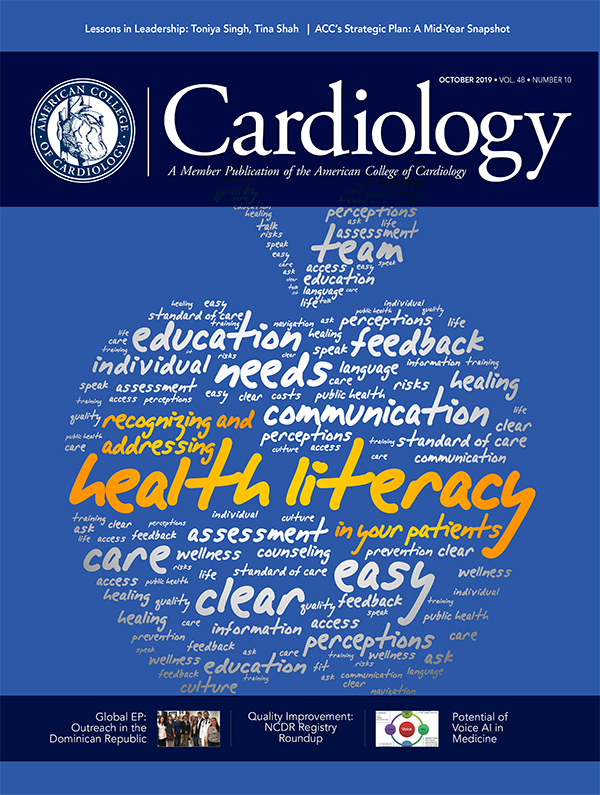Feature | TCT 2019: Top Interventional Takeaways
TCT 2019 in San Francisco has left us with a few trials that potentially may change our interventional practice. The COMPLETE study is now complete! To refresh your memory, the COMPLETE trial was presented at ESC Congress 2019, one month before TCT, and studied patients presented with STEMI and multivessel disease. At a median of three-years follow-up, complete revascularization was superior to culprit-only PCI with lower cardiovascular death, myocardial infarction (MI) or ischemia-driven revascularization.
The initial presentation didn't specify whether there was a difference in outcome when complete revascularization was performed during the same hospitalization or later. This question was answered at TCT 2019 in a late-breaking trial presentation, which showed that complete revascularization reduced cardiovascular death and MI in patients who underwent a second procedure a median of one day or 23 days after the initial PCI (by 23 percent and 31 percent respectively).
So regardless of when you plan the second "staged" procedure, now we have the option of completing the job during the same hospital stay or at a later time. This is important especially in patients with chronic kidney disease when the contrast volume and exposure is a concern.
Left main intervention received good attention at TCT 2019. The five-year follow-up of the EXCEL trial showed that PCI was noninferior to CABG for patients with left main coronary artery disease for a primary composite outcome of all-cause death, stroke or MI, with rates of 22 percent and 19.2 percent, respectively.
Looking at the data at different timelines is important. At one month, the PCI group had fewer events compared with the CABG group. However, the early benefit of PCI attenuated over time and the curves crossed over at about 36 months, leading to a similar mean time free from adverse events with both treatments at five years. It was interesting to note that the funder for the trial declined to support the trial for continued follow-up.
Dual antiplatelet therapy (DAPT) duration is a moving target. At TCT 2019, TWILIGHT was one of the biggest highlights. In patients with a high risk of bleeding who had undergone PCI and three months of DAPT, ticagrelor monotherapy for 12 months, vs. ticagrelor plus aspirin, resulted in substantially less bleeding. The decrease in bleeding rates did not lead to ischemic harm over a period of one year.
It's interesting to see that continuing ticagrelor alone after three months reduced any bleeding, including Bleeding Academic Research Consortium (BARC) type 2, 3 or 5. The TWILIGHT findings differ from the GLOBAL LEADERS findings, presented at ESC Congress 2019 showing that one month of DAPT followed by ticagrelor monotherapy for an additional 23 months was not associated with a lower incidence of bleeding.
The authors of TWILIGHT attributed the difference in results to different patient populations as well as difference in angiographic findings, trial design comparator regimens and bleeding ascertainments. Based on TWILIGHT findings, now we have hope that shorter DAPT is safe in high-risk patients and aspirin can be stopped safely with no increase of ischemic events.
The safety and benefits of chronic total occlusion (CTO) intervention is an ongoing debate. The three-year follow-up of the Euro-CTO registry focused on the safety of CTO intervention against optimal medical therapy (OMT). Interestingly, CTO intervention was not associated with increased cardiovascular death and nonfatal MI compared with OMT at three years if performed by experienced operators.
The COAPT trial continues to show higher survival and less heart failure hospitalization at three years in patients receiving MitraClip plus guideline-directed medical therapy (GDMT) for functional mitral regurgitation (MR) compared with GDMT alone. After two years, patient crossover to the MitraClip arm was allowed.
Among the 58 patients who crossed over to MitraClip, the 12-month rate of the primary endpoint was just 28 percent, nearly matching the rate seen among the group originally treated with the MitraClip at one year. Again, we see differences in the outcome of patients receiving MitraClip in the COAPT trial compared with MITRA-FR.
The latter presented two-year follow-up at the ESC Congress 2019 a month before TCT 2019 and showed no benefits. The difference in efficacy of MitraClip was attributed to differences in patient characteristics, echocardiographic parameters for functional MR, and the medical therapy that was received before and during randomization.
Staying in the structural heart space, PARTNER 2A showed that at five years there were similar rates of death and disabling strokes between TAVR and SAVR in patients with severe aortic stenosis and intermediate surgical risk. It was striking to see that patients who had TAVR developed higher rate of paravalvular regurgitation (PVR), leading to higher rates of mortality compared with SAVR patients.
Similarly, TAVR with the transthoracic approach had worse outcomes compared with SAVR at five years. The findings continue to support that survival is best in patients who had been left with none-or-trace PVR after transfemoral access TAVR.
In terms of endovascular science and updates, the patient-level data from the LEVANT series of trials looking at a paclitaxel-coated balloon for the treatment of peripheral arterial disease was interesting. The patient-level data showed no differences in mortality compared with a plain balloon for peripheral arterial intervention, which is different from the meta-analysis published in 2018 and suggested increased mortality in patients who underwent peripheral arterial intervention with drug-coated balloons.
In summary, TCT 2019 brought a lot of trials with the potential to change our interventional cardiology practice. Shorter DAPT is safe and effective in high-risk populations; PCI or CABG for left main disease is comparable; referring functional MR patients with GDMT to MitraClip decreases heart failure hospitalization and mortality; and complete revascularization during or after the index STEMI admission is associated with decreased mortality, MI and ischemia-driven revascularization.
Clinical Topics: Cardiac Surgery, Cardiovascular Care Team, Heart Failure and Cardiomyopathies, Invasive Cardiovascular Angiography and Intervention, Noninvasive Imaging, Valvular Heart Disease, Atherosclerotic Disease (CAD/PAD), Aortic Surgery, Cardiac Surgery and Heart Failure, Cardiac Surgery and VHD, Acute Heart Failure, Interventions and Coronary Artery Disease, Interventions and Imaging, Interventions and Structural Heart Disease, Interventions and Vascular Medicine, Echocardiography/Ultrasound, Mitral Regurgitation
Keywords: ACC Publications, Cardiology Magazine, TCT19, Transcatheter Cardiovascular Therapeutics, Adenosine, Aortic Valve Stenosis, Aspirin, Coronary Artery Disease, Diabetes Mellitus, Type 2, Echocardiography, Follow-Up Studies, Heart Failure, Hemorrhage, Hospitalization, Incidence, Length of Stay, Mitral Valve Insufficiency, Myocardial Infarction, Paclitaxel, Percutaneous Coronary Intervention, Peripheral Arterial Disease, Random Allocation, Registries, Renal Insufficiency, Chronic, Stroke, Transcatheter Aortic Valve Replacement
< Back to Listings


